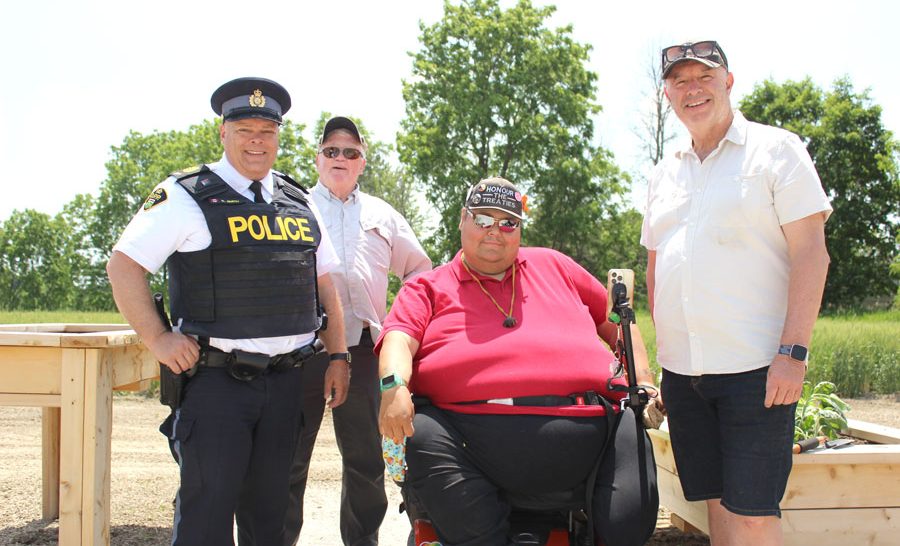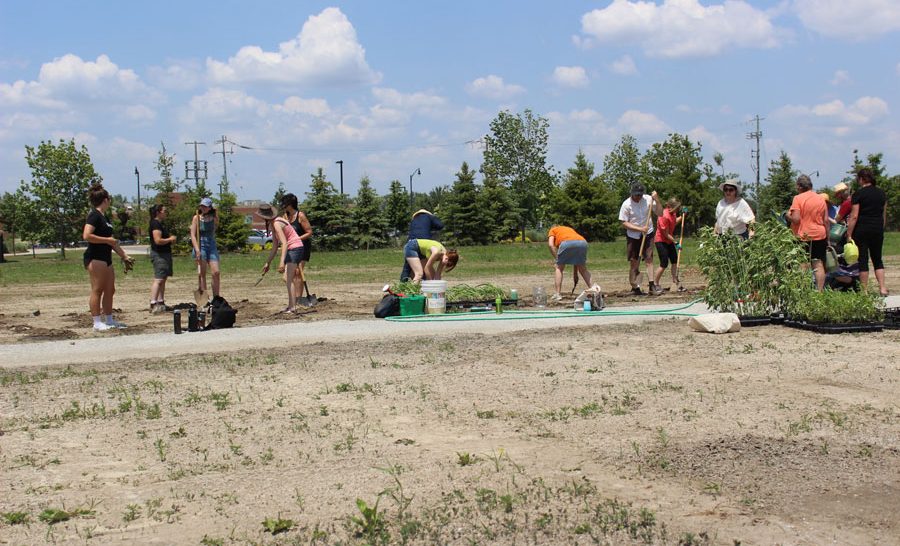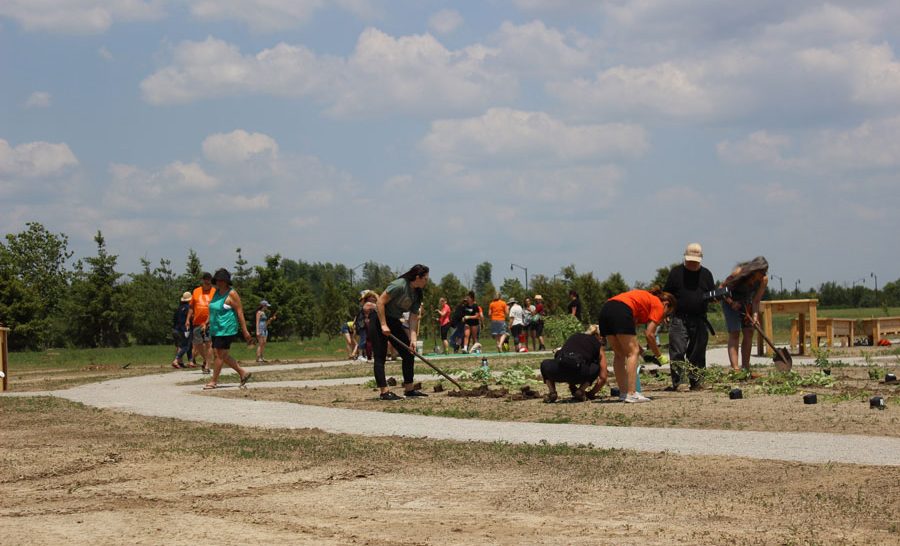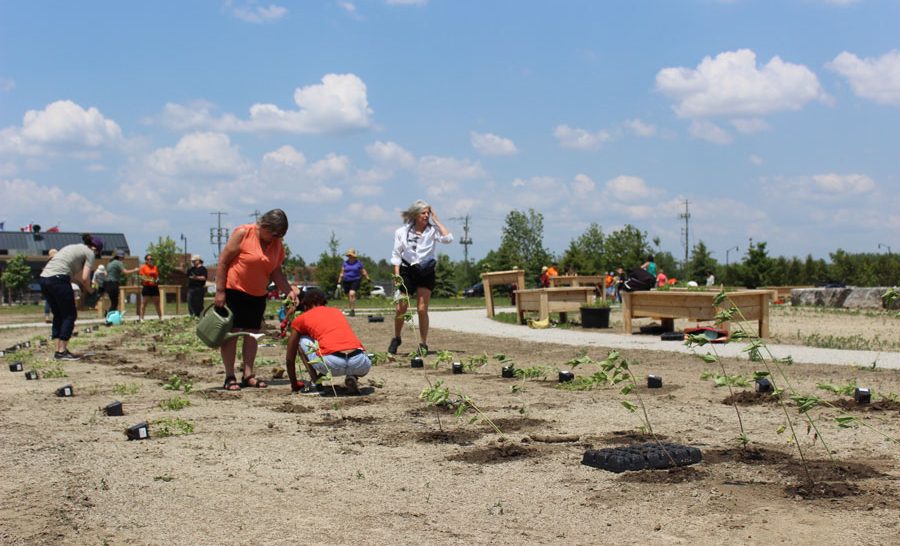ABOYNE – June 21 marks National Indigenous Peoples Day and the summer solstice.
On this day about 50 people came together to plant medicines, including sweetgrass, sage and tobacco, at the Indigenous Gathering Circle.
The midday event was filled with ceremony, conversation, bright sunshine and gusty winds.
Before any of the hundreds of plants went into the soil, important protocols were followed to ensure the medicines, as well as flowers and corn, were planted in a good way.
Sema, or tobacco, was sprinkled in each hole, along with water and a prayer. Only after these three offerings were the plants placed into the soil.
Mike O’day Ziibing Ashkewe was one of the people making the offerings, and he said his prayers were for “conversation, compassion, and love above all else.”
He said taking the time for ceremony before planting is important because when things are planted into the Earth, it is “something that is going to last forever – beyond your mortal coil.
“You are planting an idea that continues beyond you.”
Ashkewe travelled to Aboyne from Guelph to celebrate the solstice and Indigenous Peoples Day.
He said he realized it was “paramount” that he attend the planting event after he saw his spirit animal, the fox, the night before.
To Ashkewe it is important for people to show up to events like this one because “if we are really going to move the needle on truth and reconciliation, we need to come together to understand each other’s thoughts, ideas and grievances, so we can collaborate together to create a better tomorrow.”
Centre Wellington Mayor Shawn Watters was one of the volunteers helping to plant the garden.
He said the gathering represented a “bridging of worlds,” and a step towards something that should have happened a long time ago.
While a lot of Wellington’s community arrived in the area as settlers, “Indigenous people were here since time immemorial,” Watters said.
He added the Indigenous Gathering Circle offers an opportunity for “learning [and] to share space and support each other as we move forward.”
Watters said “we can learn a lot from Indigenous neighbours,” such as how to respond to the increasing threat of climate change and “prepare our community to deal with more extreme weather events.”
That includes how to make the area a “more hospitable place” by planting trees, improving storm management and addressing infrastructure issues, Watters said.
“If you look at Indigenous teachings, it’s about learning how to respect the environment,” he said.
“We want to work with the environment so it protects us.”
Amber Holmes, a member of the Wellington County Advisory Committee and one of the leading forces behind the Indigenous Gathering Circle, said the space is a grassroots initiative supported by Wellington County.
To make a donation to support costs for medicines, plants, infrastructure, events and guest speakers, visit the county’s website.







